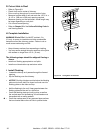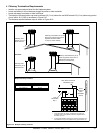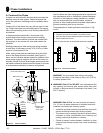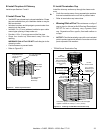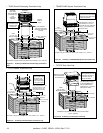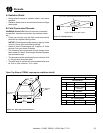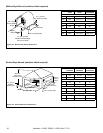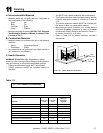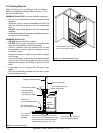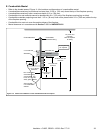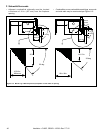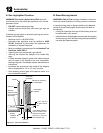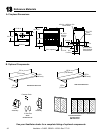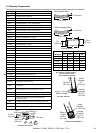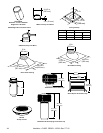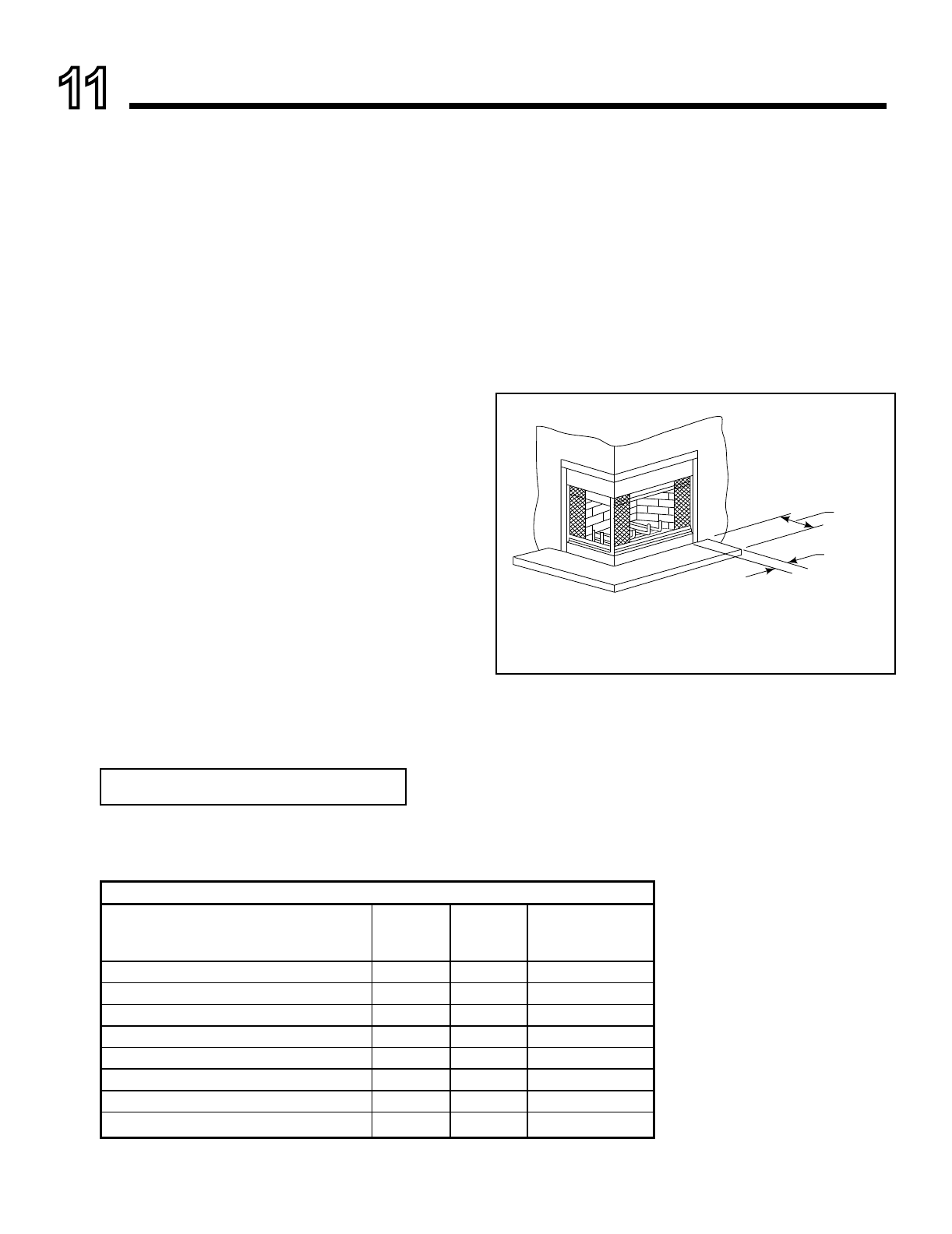
37
11
Finishing
A. Non-combustible Materials
• Materials which will not ignite and burn, composed of
any combination of the following:
- Steel - Iron
- Brick - Tile
- Concrete - Slate
- Glass - Plasters
• Materials reported as passing ASTM E 136, Standard
Test Method for Behavior of Metals, in a Vertical Tube
Furnace at 750° C
B. Combustible Materials
• Materials made of or surfaced with any of the following
materials:
- Wood - Compressed paper
- Plant bers - Plastic
• Any material that can ignite and burn; ame proofed or
not, plastered or un-plastered
16 in.
406 mm
8 in.
203 mm
C. Hearth Extension
WARNING! Risk of re! High temperatures, sparks,
embers or other burning material falling from the replace
may ignite ooring or concealed combustible surfaces.
• Protective metal hearth strips MUST be installed.
• Hearth extensions MUST be installed exactly as
specied.
Table 11.1
Hearth Extension Insulation Alternatives-Total minimum R Value must equal 1.03
Material
k per inch
thick
r per inch
thick
Minimum
thickness
required
Hearth & Home HX3, HX4 (Micore 300™) 0.49 2.06 1/2 in.
USG Micore 160™ 0.39 2.54 1/2 in.
USG Durock™ Cement Board 1.92 0.52 2 in.
Cement Mortor 5.0 0.20 5-1/8 in.
Common Brick 5.0 0.20 5-1/8 in.
Ceramic Tile 12.50 0.08 12-1/4 in.
Armstrong™ Privacy Guard Plus 0.46 2.18 1/2 in.
Marble 14.3-20.0 0.07-0.05 14-5/8 in. - 20-3/8 in.
R = 1/k x inches of thickness
• You MUST use a hearth extension with this replace.
• This replace has been tested and approved for use with
a hearth extension insulated to a minimum R value of
1.03.
• The hearth extension material MUST be covered with
tile, stone or other non-combustible material.
• Manufactured hearth materials will usually have a
published R value (resistance to heat) or k value
(conductivity of heat). Refer to the formula in Table 11.1
to convert a k value to an R value,
• Refer to Table 11.2 for hearth extension insulation
alternatives.
Figure 11.1 Hearth Extension Dimensions
Heatilator • CL36D, CR36D • 12538 • Rev Z 7/12




